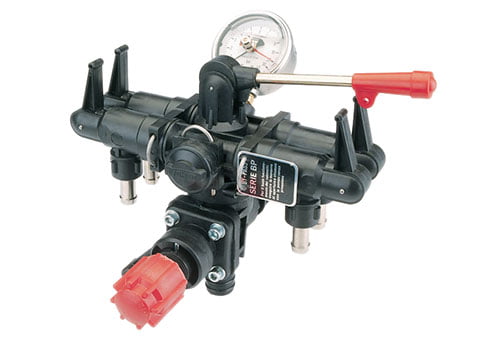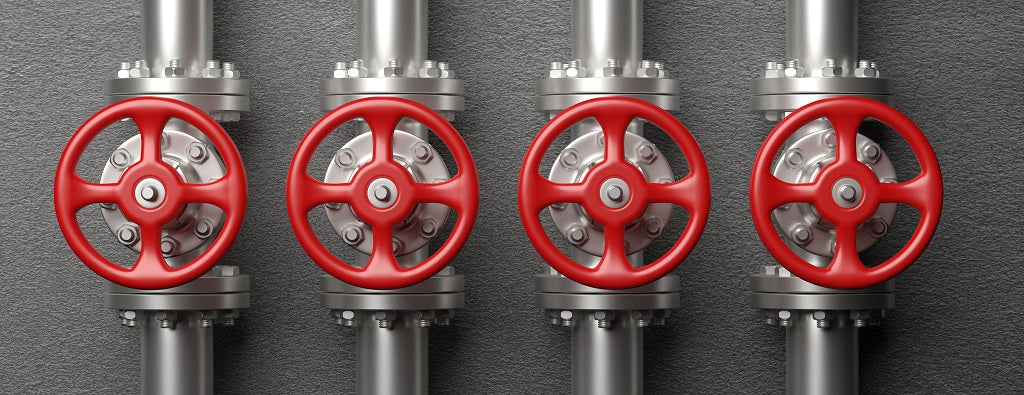Maximizing System Control with High-Performance Control Valves
Wiki Article

Maximize Energy Savings and Comfort With Advanced Structure Automation Controls
In the world of modern design and facility monitoring, the integration of sophisticated building automation manages stands as a pivotal advancement. By harnessing the power of automation, buildings can adapt, respond, and progress in ways that were when unimaginable.Power Effectiveness Benefits
Power performance benefits can substantially lower energy intake and functional costs in buildings. By carrying out energy-efficient practices and technologies, building owners and drivers can attain substantial financial savings while likewise adding to ecological sustainability. One of the main benefits of enhancing power effectiveness in structures is the decrease of energy costs. Energy-efficient systems, such as advanced building automation controls, can enhance making use of sources like home heating, cooling, and lighting, bring about lower energy costs gradually.In addition, enhanced energy effectiveness can lengthen the life-span of building tools and systems. By running more successfully, HVAC systems, lighting fixtures, and various other structure components experience much less deterioration, causing decreased upkeep and substitute costs. In addition, energy-efficient structures typically regulate greater building values and rental prices, giving lasting financial benefits to owners.
Moreover, power performance can enhance passenger comfort and performance. Correctly managed interior settings with ideal lighting and thermal problems develop a more pleasant and conducive workspace, resulting in enhanced worker complete satisfaction and performance. Generally, the power effectiveness benefits related to advanced building automation controls are complex, incorporating cost savings, environmental stewardship, and occupant wellness.
Boosted Convenience Control
Enhancing comfort control in building settings requires an innovative assimilation of innovative automation systems for optimum passenger well-being. By using innovative building automation controls, centers can customize the indoor environment to satisfy the certain requirements and preferences of owners. These systems make it possible for exact regulation of ventilation, lights, and temperature, developing a productive and comfy environment. Owner satisfaction and efficiency are closely connected to thermal convenience, making it necessary to have systems in position that can adjust to transforming problems in real-time.Boosted comfort control surpasses fundamental temperature changes. It consists of features such as customized setups, occupancy sensors, and all-natural light usage to produce a vibrant and responsive setting. By integrating these innovative controls, structures can not only improve comfort yet additionally enhance energy performance by enhancing system operations based upon real occupancy and usage patterns. Ultimately, focusing on owner convenience via advanced automation systems results in a more delightful and healthier indoor environment.
Operational Effectiveness Improvements

Additionally, the execution of real-time surveillance and analytics tools enables structure drivers to recognize power inadequacies and functional anomalies promptly. By constantly keeping track of power use patterns and system performance metrics, adjustments can be made in real-time to enhance power intake and guarantee peak functional performance. control valves. In addition, integrating need response methods into building automation controls can even more improve functional performance by dynamically readjusting power usage based upon grid problems and pricing signals
Indoor Environment Optimization
Reliable interior environment optimization is a fundamental element of structure automation controls, making certain owners' convenience and health while maximizing power savings. By making use of innovative sensing units and controls, constructing automation systems can continually change and keep track of temperature level, moisture degrees, air quality, and ventilation to create an optimum indoor atmosphere. Maintaining regular and comfortable problems not only enhances owner contentment however likewise increases efficiency and total well-being.Interior climate optimization likewise plays an important role in power efficiency. By fine-tuning home heating, air flow, and cooling systems based upon real-time information and occupancy patterns, building automation controls can significantly minimize energy consumption - control valves. Implementing techniques such as demand-controlled ventilation and thermal zoning can help reduce energy waste while making sure that each location of the building receives the required conditioning.

Lasting Environment Production
Building automation regulates not only optimize indoor environment problems for energy efficiency and occupant comfort however also lay the structure for producing a sustainable setting via tactical monitoring of systems and resources. By incorporating innovative structure automation technologies, such as sensing units, actuators, and smart software application, facilities can keep track of and change power usage in real-time to lessen waste and lower their carbon footprint. These systems allow predictive maintenance, determining potential problems prior to they intensify and enhancing devices performance to improve longevity and performance.Furthermore, lasting atmosphere creation prolongs beyond power management to incorporate water conservation, waste decrease, and indoor air top quality renovation. Structure automation controls can control water use, identify leaks, and ensure appropriate waste disposal methods, adding to overall sustainability initiatives. Additionally, by checking and controlling ventilation and purification systems, these innovations boost resident wellness and productivity while lowering energy usage connected with heating and cooling procedures.
Conclusion
To conclude, progressed building automation controls deal our website substantial benefits in terms of power cost savings, comfort control, functional efficiency, interior environment optimization, and producing a lasting environment. By applying these controls, structures can achieve optimum efficiency while decreasing power consumption and boosting occupant comfort. It appears that using advanced automation technology is crucial in boosting building efficiency and creating a much more sustainable view it now future.Power effectiveness advantages can substantially minimize power intake and operational costs in buildings. On the whole, the power effectiveness benefits associated with advanced building automation controls are multifaceted, including expense savings, ecological stewardship, and occupant well-being.
In addition, integrating demand feedback methods into structure automation controls can better improve functional performance by dynamically readjusting power use based on grid problems and prices signals.
Building automation regulates not only maximize indoor climate conditions for power efficiency and occupant comfort yet additionally lay the structure for developing a sustainable environment with tactical management of systems and resources.In verdict, advanced building automation regulates deal substantial advantages in terms of energy savings, convenience control, functional efficiency, indoor climate optimization, and producing a sustainable click resources setting.
Report this wiki page